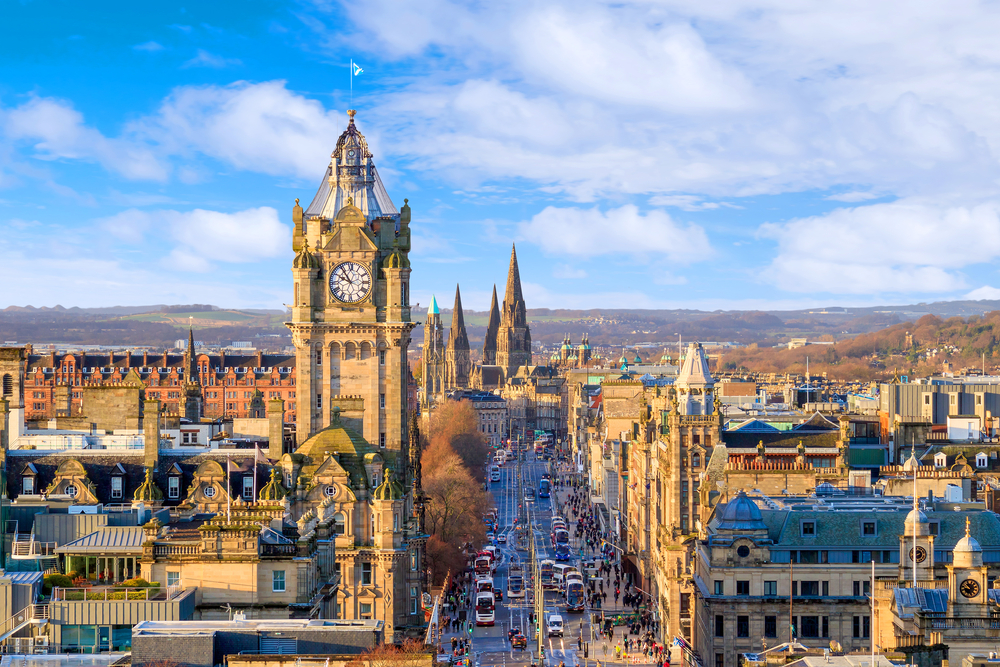In his monthly sustainability news round-up, Oliver Balch reports on CDP’s first ranking of cities, the damning case against hydropower, and how millennials want employers to act more responsibly
IN ILLINOIS and Iowa, the Mississippi river has broken its banks. At “major flood” levels for more than 40 days and counting, residents in the US cities of Davenport, Bettendorf Moline, East Moline and Rock Island are growing understandably nervous. Last time the iconic US river posted such record heights, back in 1993, the clean-up bill exceeded $15bn.
The effects of climate change are not so extreme everywhere, but no city on the planet is able to escape the repercussions of our rapidly changing climate. So it makes sense that someone starts tracking what city governments are doing to mitigate such effects, and how different cities compare. Step forward CDP, the sustainability data specialists. In the first study of its kind, London-based CDP set about ranking steps taken by 596 cities to cut emissions and set climate strategies.
The best performers – assigned a place on CDP’s “A List” – run to 43 (7% of total). The top-flight cities include national capitals London, Athens, Reykjavík, Paris, Canberra and Buenos Aires as well as other cities of global renown, such as New York, Sydney, The Hague and Toronto. Somewhat surprisingly, given the US federal government’s decision to withdraw from the Paris climate agreement, more than half of the leading cities (24) hail from North America. Of these, nine are from California, placing the Sunshine State on the same footing as the whole of Europe. Africa and Latin America are the least represented regions, with only one city apiece on the A List (Buenos Aires and Cape Town).

All the 43 top-ranked cities have ambitious targets to cut emissions, with 13 of them aiming to be either climate- or carbon-neutral by 2050 (Melbourne, boldly, has given itself until just 2020). Meanwhile, four of the selected cities have 100% renewable energy targets: Canberra (by 2020), Minneapolis and San Francisco (2030), and Paris (2050). The Icelandic capital of Reykjavík is already there, thanks in large part to its high installed hydro (70%) and geothermal (30%) power generation capacity. Over two-thirds (70%) of all energy-related carbon emissions derive from cities, making urban decarbonisation a make or break issue, according to CDP.
Cities also form the focal point of a new research paper by the University of Navarra’s IESE Business School. The Cities in Motion Index seeks to identify the “smartest” and most sustainable cities. Topping the group of 174 candidates from 80 countries is London. The UK capital won praise for its international outreach and human capital (first in both dimensions), and for its transport infrastructure (third). Next in line were New York and Amsterdam. In the small-city category (600,000 to 1 million inhabitants), the Scottish capital of Edinburgh took top spot. Of the 100 indicators used to rank the contending cities, 10 relate to the environment. These range from carbon and methane emissions to access to water and pollution. For environmental performance alone, IESE places Reykjavík in top place, followed by Wellington and Copenhagen. Four of the remaining top 10 eco-cities are European: Tallinn, Riga, Stockholm and Lisbon.
Damning report on hydropower urges greener alternatives

FOR DECADES, hydropower was held up as the clean energy of choice, leading to the construction of huge hydroelectric dams on many of the world’s most iconic rivers. Yet this “free” renewable source of energy comes at a cost, primarily in the form of displaced communities and habitat destruction.
Now, with the price of alternative technologies such as wind and solar dropping dramatically, is it time to rein in on dam projects? That’s the case being put forward by conservation groups WWF and The Nature Conservancy (TNC) in a new report, Connected and Flowing.
The report argues that the cost for generating power from wind and solar (around $0.05 per kilowatt hour) is now roughly equivalent to hydro. By advancing clean alternatives to hydroelectric dams, the fragmenting of nearly 165,000 km of river channels could be avoided, the report’s authors calculate.
The call is well-timed, coming as it does on the heels of a hard-hitting report released earlier this month by the Intergovernmental Panel for Biodiversity and Ecosystems Services (IPBES). Among other recommendations, the IPBES’s Global Assessment encourages national governments to re-prioritise river connectivity. The proposal is based on statistics in IPBES’s own report that point to an 83% decline in freshwater species since 1970. The urgency of the situation is confirmed by recent research published in the journal Nature. According to the peer-reviewed paper, almost two-thirds (63%) of all rivers longer than 1,000 kilometres are no longer free-flowing over their entire length. A mere 23% flow uninterrupted to the ocean.

Free-flowing rivers not only provide support for freshwater fish stocks, but they prevent deltas from flooding (thanks to the sediment they deposit) and prevent erosion. The WWF/TNC report says that if the current trajectory for hydropower development on the Mekong River is continued, for example, it would lead to the loss of half of migratory fish biomass, and cause the Mekong Delta, home to 21 million people, to be half under water by the end of the century. Among the alternatives considered by WWF and TNC is the addition of turbines to non-powered dams and off-channel pumped storage.
The WWF and TNC report underlines a general sense of optimism regarding the commercialisation of renewables. In 2018, nearly two-thirds (63%) of all new global power generation was renewable in origin, according to the International Renewable Energy Agency (Irena). Of this, wind and solar took the lion’s share (84%). In total, installations of non-renewable generation capacity (including nuclear) contributed an extra 171 GW to the grid in 2018. Hydropower only comprised a small proportion of this, at 21GW, marking an annual growth of merely 2% on the previous year.
Non-renewable capacity, meanwhile, has remained largely static since 2001. Coal represents one of the biggest losers. In the UK, for example, the “brown gold” now accounts for less than 10% of Britain’s power output, according to Drax Electric Insights. In early May, however, the country passed an entire week with no coal-based energy use (the first time it has done so since 1882). The UK government says it plans to phase out the country’s last coal-fired power plants by 2025. In the US, meanwhile, the Energy Information Services predicts that coal’s share of power generation will amount to a mere 25% this summer, roughly half what it was a decade ago. According to the Sierra Club, 50 coal-fired power plants have closed in the US since President Donald Trump came to office in January 2017. In total, 289 have closed since 2010, comprising 40% of the US's coal power capacity.
What workers want: responsible employers

THE HUMAN resource arguments in favour of a proactive approach to responsible business practices are well-worn: morale goes up, better workers come knocking, and all-round employee productivity increases. An extensive global report by the electronic and computer hardware giant HP adds weight to such arguments. Six in 10 (61%) of the 10,000 office workers surveyed say corporate responsibility and sustainability are no longer a nice to have but a must, for instance, while 56% maintain that such practices are essential to engaging the workforce in the future.
Less attention has historically been played to the risks involved for those falling behind the curve. First, the best workers send their CVs elsewhere. Nearly half (46%) of top talent say they will only work for a company with sustainable business practices. Those already employed, meanwhile, are more likely to start looking for the door. Two-fifths (40%) of those surveyed say they would consider moving jobs in the event of their employer behaving irresponsibly. This proportion jumps to 64% and 63% in the case of Chinese and Indian employees. At the other end of the scale are Americans, Brits and Canadians (31%). German workers are the most resistant to upping and going because of responsibility concerns, with only 25% saying they would consider moving. Whether employees choose to go or not, don’t expect them to sit quietly. Nearly two-fifths (39%) of workers say they would leave a bad review of their company on a website such as Glassdoor. A similar figure (38%), meanwhile, say they would be unlikely to recommend their workplace to others, compared to a mere 4% of employees in firms with good responsibility practices.
If these findings for the general workplace sound alarming, wait until you ask the opinions of the newest cohort of workers. According to research commissioned by filter manufacturer Brita Professional, 90% of millennial and Generation Z employees believe their bosses should actively incentivise responsible practices. Chief among their priorities are an eco-friendly building to work in (46%), health and wellbeing programmes for employees (45%) and volunteering opportunities with a charity (36%). Young workers have strong feeling about office culture as well. Balanced working hours are a must for half of all millennial and Generation Z workers, followed by a spirit of transparency (46%) and a commitment to personal development (44%). The study was based on feedback from 1,000 young professionals.
Welcome though improvements to employees’ working environments and culture are, they can feel somewhat cosmetic when compared to the real nitty-gritty of the workplace, namely considerations over pay. According to data released by the compensation consultancy, Equilar, US chief executives are paid on average 254 times more than the median worker, up from 235:1 last year. In the case of Elon Musk, chief executive of the electric car company Tesla, the ratio increases to a staggering 40,668:1. Average pay for a US chief executive currently stands at $15.6m. Oracle’s joint CEOs, Mark Hurd and Safra Catz, are the best paid, at $108m per year each.


